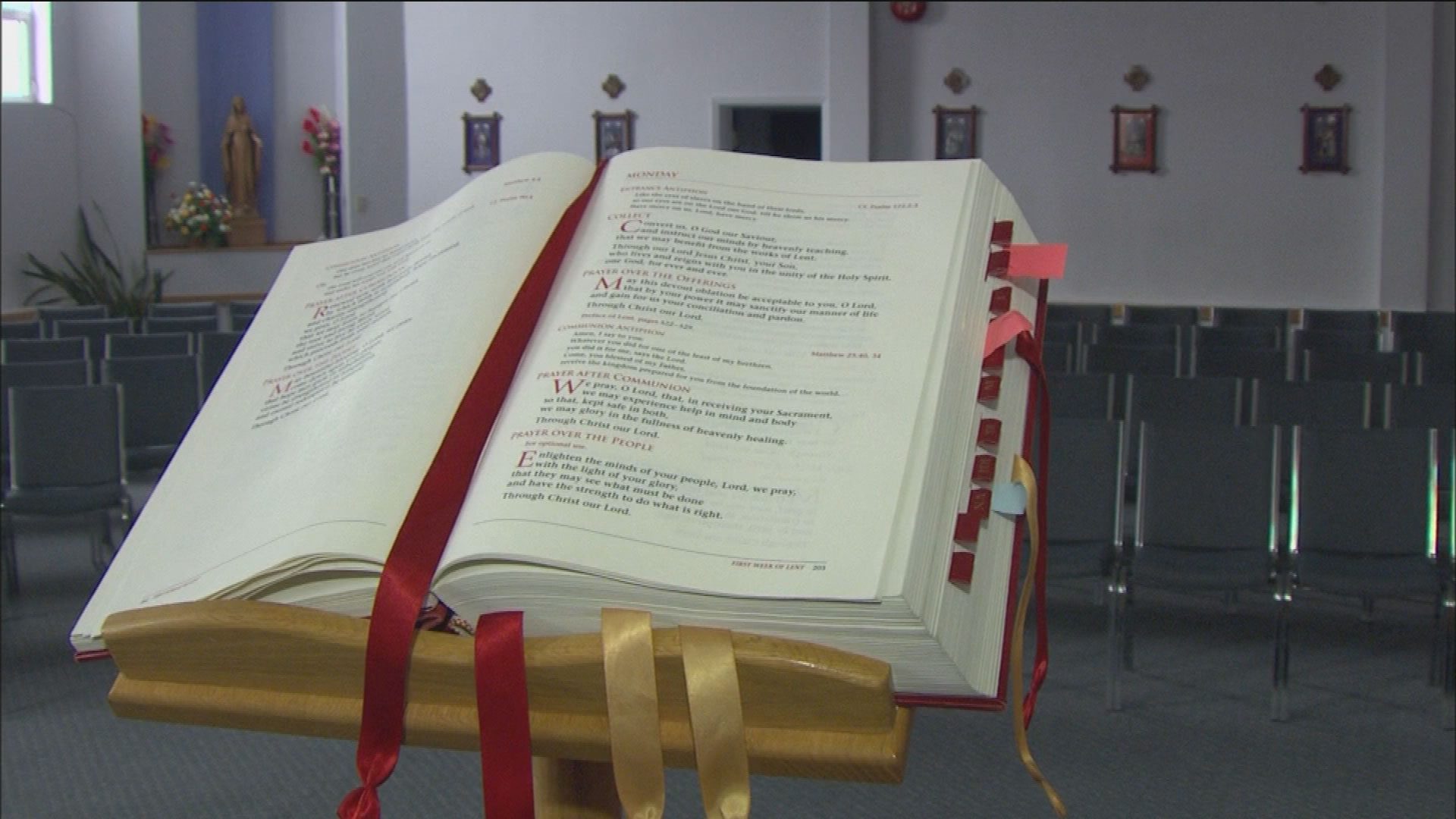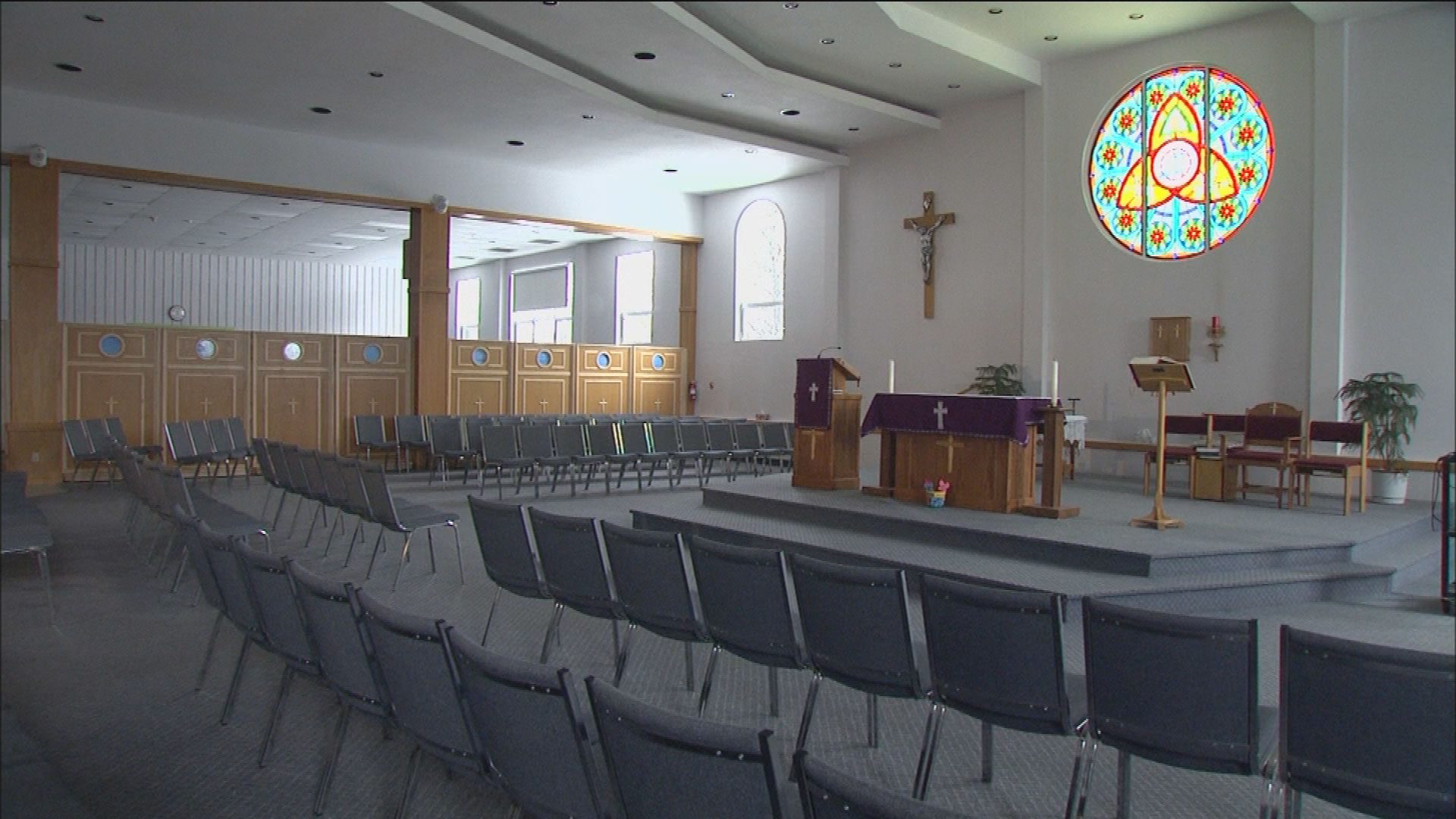
The sign outside the front of the RCMP detachment in Prince George, B.C. Photo: APTN file
Day school survivors have testified about a sour relationship with the RCMP before they complained to the Canadian Human Rights Commission about racial discrimination in policing.
“The only thing important to them is chasing Natives away and putting them in jail,” said hereditary chief Richard Perry of Lake Babine First Nation in northern British Columbia this week.
Perry made the comments while testifying before a Canadian Human Rights Tribunal in Burns Lake – a village that straddles the Lake Babine and Burns Lake first nations.
Perry, like thousands of other Indigenous children across Canada, was forced to attend a Christian day school, in his case Immaculata Catholic Elementary School in the late 1960s.
He said he was abused physically for years by A.B., a teacher in area schools in the 1960s and ‘70s whose name is protected by a publication ban at the 10-week hearing.
50 years ago
Perry said his parents complained to the school and the RCMP 50 years ago but nothing was done.
So he hoped things would be different when he joined a group of survivors in filing a historical abuse complaint against A.B. with the Prince George RCMP in 2012.
But that wasn’t the case
The RCMP closed their investigation after 18 months in 2013 without informing survivors or – the tribunal heard – forwarding evidence for criminal charges to the Crown prosecutor.
Survivors then alleged to the Canadian Human Rights Commission the RCMP discriminated against them in favour of A.B. and a tribunal was asked to review the case.

“I’ve been asking for an investigation of Immaculata and A.B. for a very long time,” Perry told tribunal member Colleen Harrington.
Laura Robinson, a freelance investigative journalist from Ontario, testified she began looking into complaints of physical abuse against A.B. in 2012.
She said she familiarized herself with the thorny relationship between Indigenous peoples and the national police force by reading a report by Canada’s Truth and Reconciliation Commission (TRC).
The TRC, among other things, reported how the state used the RCMP to take First Nations, Metis and Inuit children from their families and put them into assimilationist Indian day and residential schools.
Survivors have disclosed via the TRC and various class-action lawsuits seeking compensation that many of them experienced regular emotional, physical and sexual abuse.
Distrustful and suspicious
And they remain distrustful and suspicious of the RCMP, according to the TRC.
“We need healing,” said Grant Alphonse, a counsellor with the Indian Residential Schools Survivors’ Society in B.C. “Our people need healing.”
Alphonse is at the hearing to provide support to survivors and witnesses. He has also delivered blessings in his Tl’etinqox (Tsilhqot’in) language.
“Let us work to remain positive and resolve things in a good way,” he said during a morning prayer.
Robinson, who testified over two days, said research shows survivors are at the average age of 52 when they first disclose historical abuse.

She told the tribunal she didn’t feel the RCMP was aware of, or incorporated, that knowledge into its investigation.
Particularly because of the way they questioned her interaction with survivors, wondered whether she independently corroborated survivors’ abuse claims, and suggested they colluded while waiting to share their experiences with her, the journalist and author noted.
“They’ve had 50 years to mix and mingle,” Robinson told RCMP lawyer Whitney Dunn during cross-examination Thursday.
Meanwhile, the tribunal announced Thursday it will visit the former Immaculata school in Burns Lake on Friday, specifically to tour the gym and furnace room where survivors have testified the majority of the physical abuse occurred.
The building now operates as a Catholic church.









